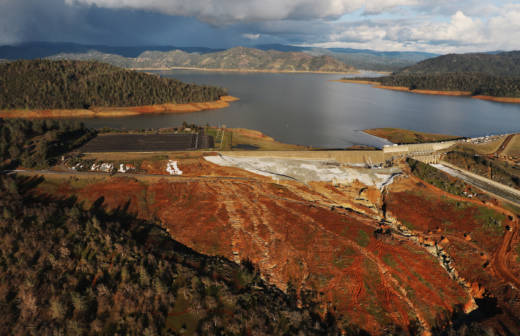A coalition of California environmental groups is calling on the California Department of Water Resources to build a complete, functional emergency spillway at Oroville Dam as part of a sweeping program to improve dam safety and flood control practices across the state and beyond.
The conservation coalition -- including Friends of the River, the California Sportfishing Protection Alliance, the South Yuba River Citizens League and American Whitewater -- released a 53-page report seeking to apply lessons learned from February's Oroville spillway crisis.
The report includes dozens of recommendations to improve oversight and operation of dams, adopt more environmentally friendly flood control measures in the Central Valley, make dam safety issues more transparent to the public, and try to heal the long, unhappy relationship between the Department of Water Resources and Oroville and other communities in the Feather River basin.
"One of the overall issues here is that California's existing dam and flood infrastructure really needs to be fixed now," Eric Wesselman, Friends of the River executive director, said in presenting the report during a media call Tuesday. "The near catastrophe at Oroville is a wake-up call for action to keep water moving and ensure people are safe and downstream communities are protected at Oroville, as well as at other high-hazard dams around the country. The incident exposed this reality that 20th century water infrastructure and management policies don't meet 21st century needs in a warming climate."
The call for action at Oroville Dam continues a battle that began in 2005 when Friends of the River, the Sierra Club and the South Yuba group asked federal regulators to consider requiring DWR, the dam's owner, to pave the emergency spillway -- a tree-and-rock-covered hillside that slopes steeply from a 1,730-foot-long concrete overflow weir to the Feather River.
